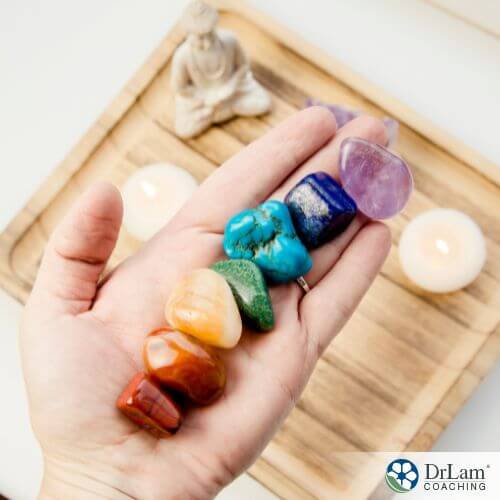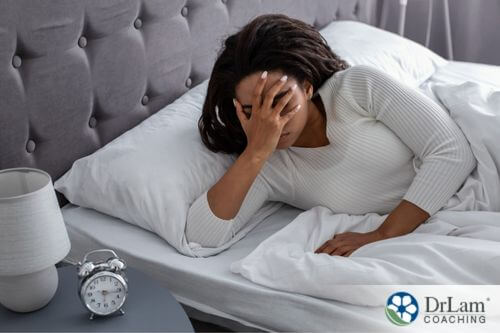Have you ever looked at the green trees and found yourself relaxing? Or worn red when you want to feel powerful? Different colors can have a noticeable effect on your mood, but it turns out that they may have a deeper impact on your body as well. This is the idea behind color therapy - an easy, safe, and often very relaxing way to help boost your mental and physical health. If you’re interested in this therapy, here are the basics.
 Color therapy, also known as chromotherapy, is based on the idea that colors can cause changes in your mood and even your biology. According to this idea, you can improve your mental and physical health by exposing yourself to different colors. People and cultures have known for years that certain colors can change your mood, symbolize certain ideas, or bring about certain effects. Purple for instance was often worn by royalty in many western cultures as a symbol of power.
Color therapy, also known as chromotherapy, is based on the idea that colors can cause changes in your mood and even your biology. According to this idea, you can improve your mental and physical health by exposing yourself to different colors. People and cultures have known for years that certain colors can change your mood, symbolize certain ideas, or bring about certain effects. Purple for instance was often worn by royalty in many western cultures as a symbol of power.
This type of therapy has been used in various cultures for centuries and is experiencing a surge in popularity in alternative therapy circles. Although there is very little evidence supporting its use, it’s often used in conjunction with conventional therapies for issues like:
Currently, alternative therapy practitioners often use color therapy in spas or saunas to foster certain emotions. Unfortunately, there’s little scientific evidence to support this therapy at the moment.
However, researchers have recently been looking into the effects of blue light, which can:
However, there is a downside to this color light. Exposure to blue light at night can suppress melatonin levels, which will disrupt your circadian rhythm. It may also raise your risk of:
This suggests that certain colors do have a sometimes very serious impact on your body and your mental health.
The research on color therapy is very preliminary. What this means is that you shouldn’t use this therapy as a replacement for any type of conventional medical therapy. See your doctor first if you have symptoms of pain, mood disorders, vision issues, or any other disorder. They will be able to determine if there are any underlying causes that need to be addressed. You can also talk to your doctor about using colors to improve your mood and well-being on top of any other measures that they recommend.
Color therapy is easy to use and safe. You just need to know what the different colors mean and what effects they could have on your health. Here are some suggestions of the best colors to use if you’re trying this kind of therapy:
However, there are individual differences here. Colors that are relaxing for some people may be triggering or aggravating for others, so you will need to do your own experiments to see how your mind and body react.
 There are two ways to use color therapy. You can either deliberately look at certain colors to elicit moods or reflect the colors on parts of your body. Both of these techniques are based on the idea that colors can enter the body through the eyes or skin. Each color has its own wavelength and frequency. Color therapists believe that these have different effects on different people and can be used for different therapeutic purposes.
There are two ways to use color therapy. You can either deliberately look at certain colors to elicit moods or reflect the colors on parts of your body. Both of these techniques are based on the idea that colors can enter the body through the eyes or skin. Each color has its own wavelength and frequency. Color therapists believe that these have different effects on different people and can be used for different therapeutic purposes.
Here's how you can start experimenting with color in your own home:
Being exposed to blue light, particularly at night, can severely impact your sleeping patterns. So, change the tones on your devices or wear anti-blue-light glasses if you’re on devices at night.
Try changing the bulbs in your room for red bulbs. Red light is less harsh at night and may affect your circadian rhythm less than blue light.
Do you find yourself relaxing out in nature? This might be because of the color green, so try to spend more time outside in a park or natural area. You should also try to take your work breaks outside for stress relief.
When you decorate your home, try to be more intentional about what colors you use. Try colors that make you feel calm for bathrooms and bedrooms where you want to relax and keep the bright colors for living spaces or working spaces.
Don’t forget your clothes and even the accessories that you wear. Look for colors that stimulate you or elicit positive emotions and incorporate this therapy into your wardrobe.
Reducing stress through techniques like color therapy can be very beneficial for stress-related disorders like Adrenal Fatigue Syndrome (AFS). This condition occurs when ongoing stress causes the overuse of the NeuroEndoMetabolic (NEM) stress response. The NEM stress response helps your body to prepare for stressful situations. It turns on when you’re stressed, prompting the release of cortisol from the adrenal glands, which then causes changes throughout the body’s six circuits, which consist of related organs and systems that help manage stress.
The NEM stress response isn’t meant to be active over the long term. When it is, the adrenal glands can become fatigued and dysfunctional. The body’s circuits and their related organs can also start to decline in health, becoming unbalanced and causing troubling health problems.
The key to overcoming this is to reduce stress, which will allow the NEM stress response to slow down or shut down and reduce adrenal fatigue. Alternative therapies, such as using color to improve mood and health, may help with this without causing additional stress. However, you will also need to more directly address the health and functioning of specific circuits in the body, such as the Neuroaffect Circuit.
The Neuroaffect Circuit is the most relevant when you’re thinking about your mental health. Basically, it describes the three components that are involved in the physical aspects of mental health: the brain, the microbiome or the balance of bacteria in the body, and the autonomic nervous system (ANS).
 When this system becomes dysfunctional due to stress, neurotransmitter (NT) levels can go out of balance. The ANS becomes overactive and flooded with NTs that cause overexcitation. Slowed digestion causes gut inflammation and the overgrowth of bad bacteria, causing gut health to decline. This can leave you struggling with poor sleep, ongoing infections, and mood disorders such as depression and anxiety due to NT imbalances.
When this system becomes dysfunctional due to stress, neurotransmitter (NT) levels can go out of balance. The ANS becomes overactive and flooded with NTs that cause overexcitation. Slowed digestion causes gut inflammation and the overgrowth of bad bacteria, causing gut health to decline. This can leave you struggling with poor sleep, ongoing infections, and mood disorders such as depression and anxiety due to NT imbalances.
However, correcting this type of imbalance can be difficult too. Most commonly, people who experience symptoms associated with imbalances in these circuits are given medications and therapies that can be very harsh and stressful. These therapies can have their place and if you’re really struggling, then don’t hesitate to talk to your doctor about these options.
However, these types of therapies may actually cause more stress and fatigue for your already weakened body, worsening the underlying problems. Color therapy in contrast is very gentle and safe. If it works for you, it could be a good way to improve your mood and the health of the Neuroaffect Circuit without causing additional stress or strain on your body overall. It's also a great therapy to use in conjunction with other therapies to boost mood, like antidepressants, getting more sleep, and a healthy diet.
Color therapy is safe, gentle, and can be a very pleasant technique if used correctly. However, it isn’t and shouldn’t be used as a replacement for conventional medical therapies. Here’s how to use it safely and to support better health and wellbeing:
For more guidance on gentle, alternative ways to boost your mental health and relieve stress, talk to our team at +1 (626) 571-1234 for a free initial consultation, or click here.
Have you ever found that blue makes you feel relaxed or red makes you feel angry? This is the idea behind color therapy, that certain colors can bring about changes in mood or biology, and this can negatively or positively impact your physical and mental health. Research on blue light supports this idea.
